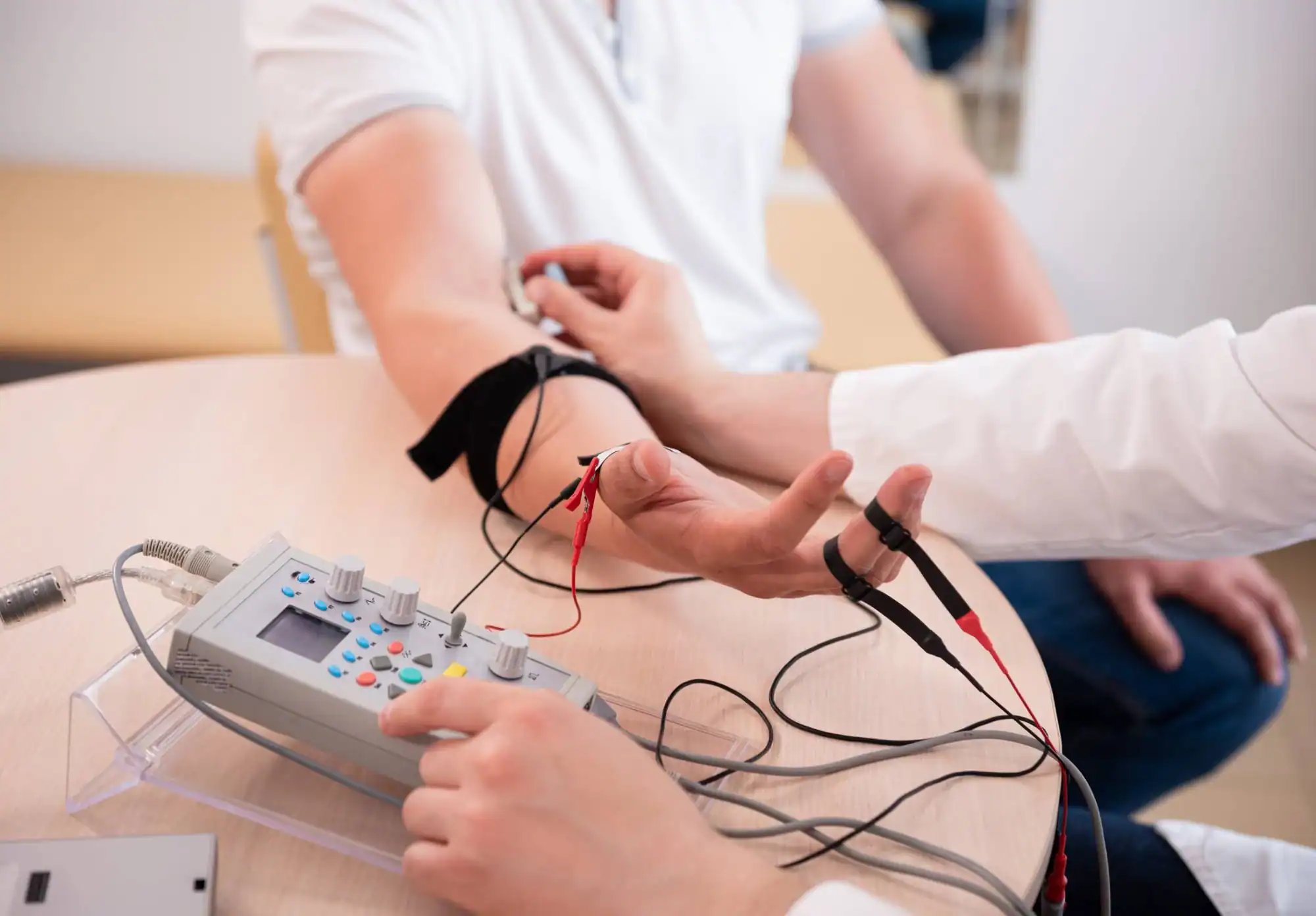Accurate EMG testing and nerve conduction studies that pinpoint exactly what’s causing your symptoms.
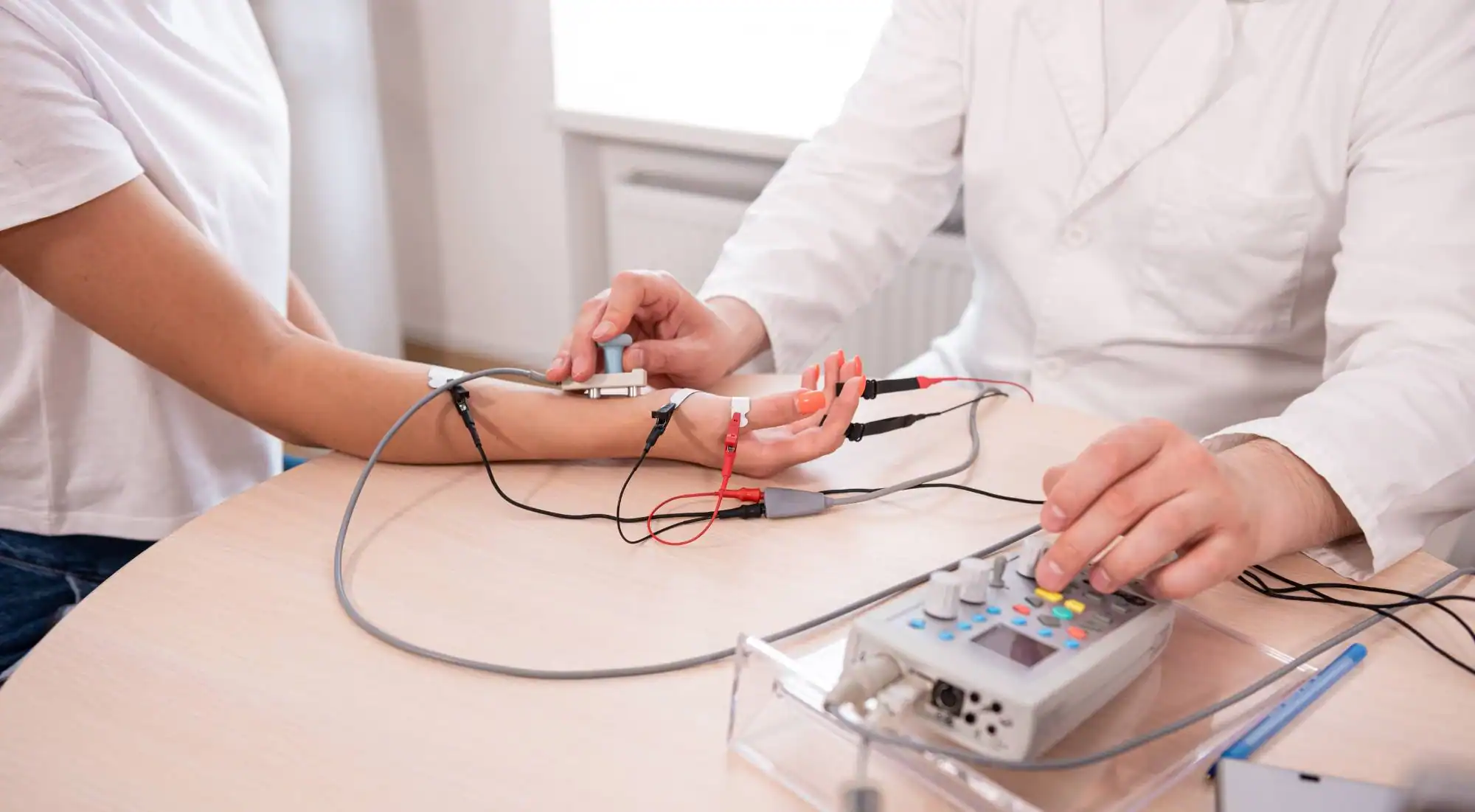
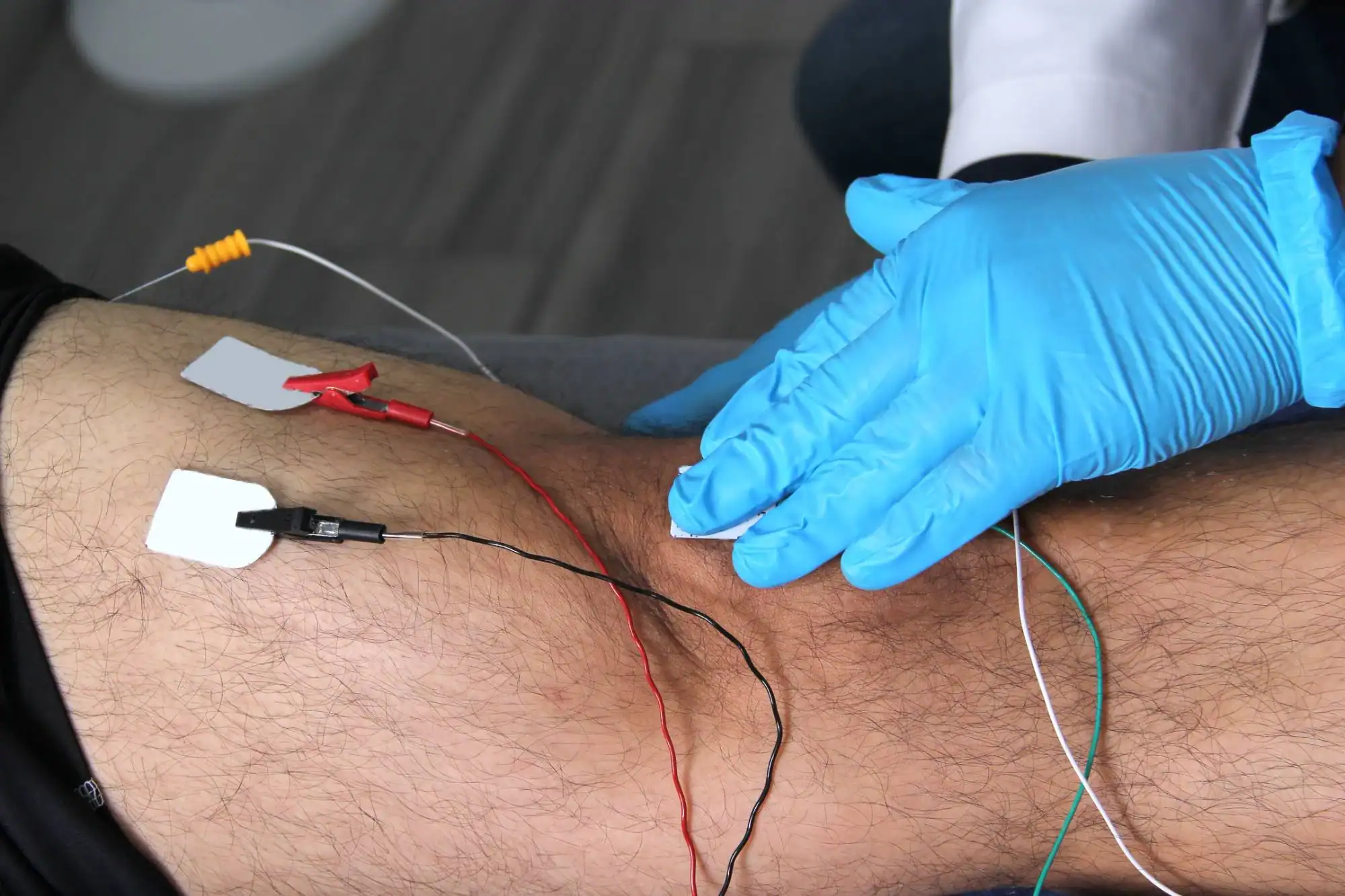
You’ve been dealing with numbness, tingling, or muscle weakness for weeks or months. Maybe your fingers go numb at night, or your back pain shoots down your leg. You need answers, not more guessing.
EMG testing gives you those answers. Within 45 minutes, you’ll know if your symptoms come from nerve damage, muscle disorders, or conditions like carpal tunnel syndrome or sciatica. No more wondering if it’s serious or if it’s all in your head.
Once you have a clear diagnosis, you can move forward with the right treatment. No more trial-and-error approaches or treatments that don’t address the real problem. You’ll know exactly what you’re dealing with and what needs to happen next.
NY Spine Medicine has been serving South Florida patients for years, specializing in spine and nerve conditions. Our team includes board-certified neurologists and physiatrists who understand exactly what you’re experiencing.
We focus specifically on nerve and muscle disorders. This isn’t a side service – it’s what we do. Every day, we help patients in Kendale Lakes and surrounding areas get definitive answers about their symptoms.
You’re not just getting a test. You’re getting interpretation from specialists who’ve seen thousands of cases and know how to connect your results to real solutions.
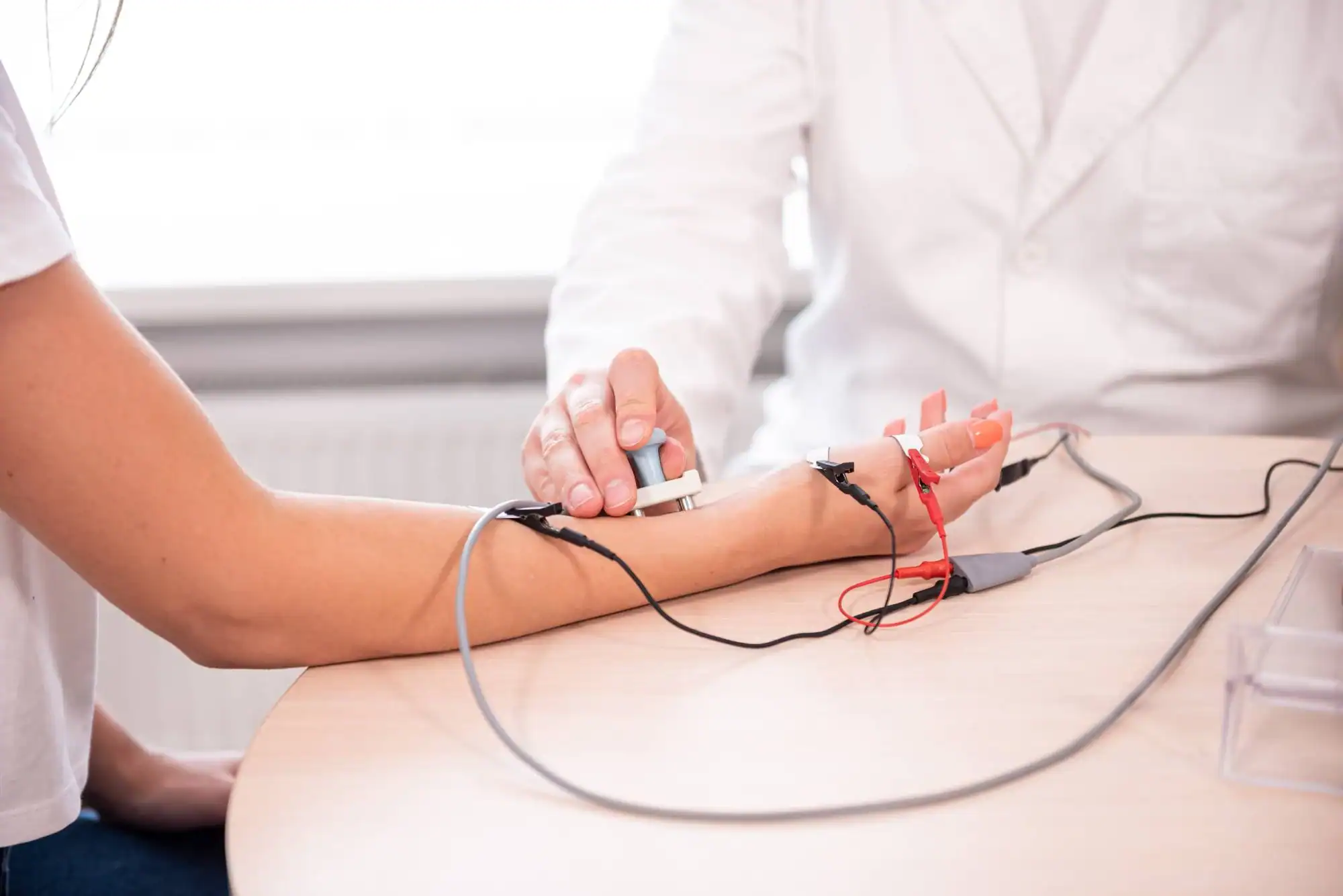
Your EMG test combines two parts: electromyography and nerve conduction studies. The nerve conduction study comes first – small electrodes placed on your skin measure how well electrical signals travel through your nerves. You’ll feel brief, mild electrical pulses, but nothing painful.
Next is the electromyography portion. A thin needle electrode is inserted into specific muscles to measure electrical activity. Yes, there’s a brief pinch when the needle goes in, but most patients say it’s much less uncomfortable than they expected. The needle picks up signals that show whether your muscles are working normally.
The entire process takes 30-45 minutes depending on which nerves and muscles need testing. You’ll get your results immediately, with clear explanation of what they mean and what your next steps should be. No waiting weeks for answers or wondering what the numbers mean.
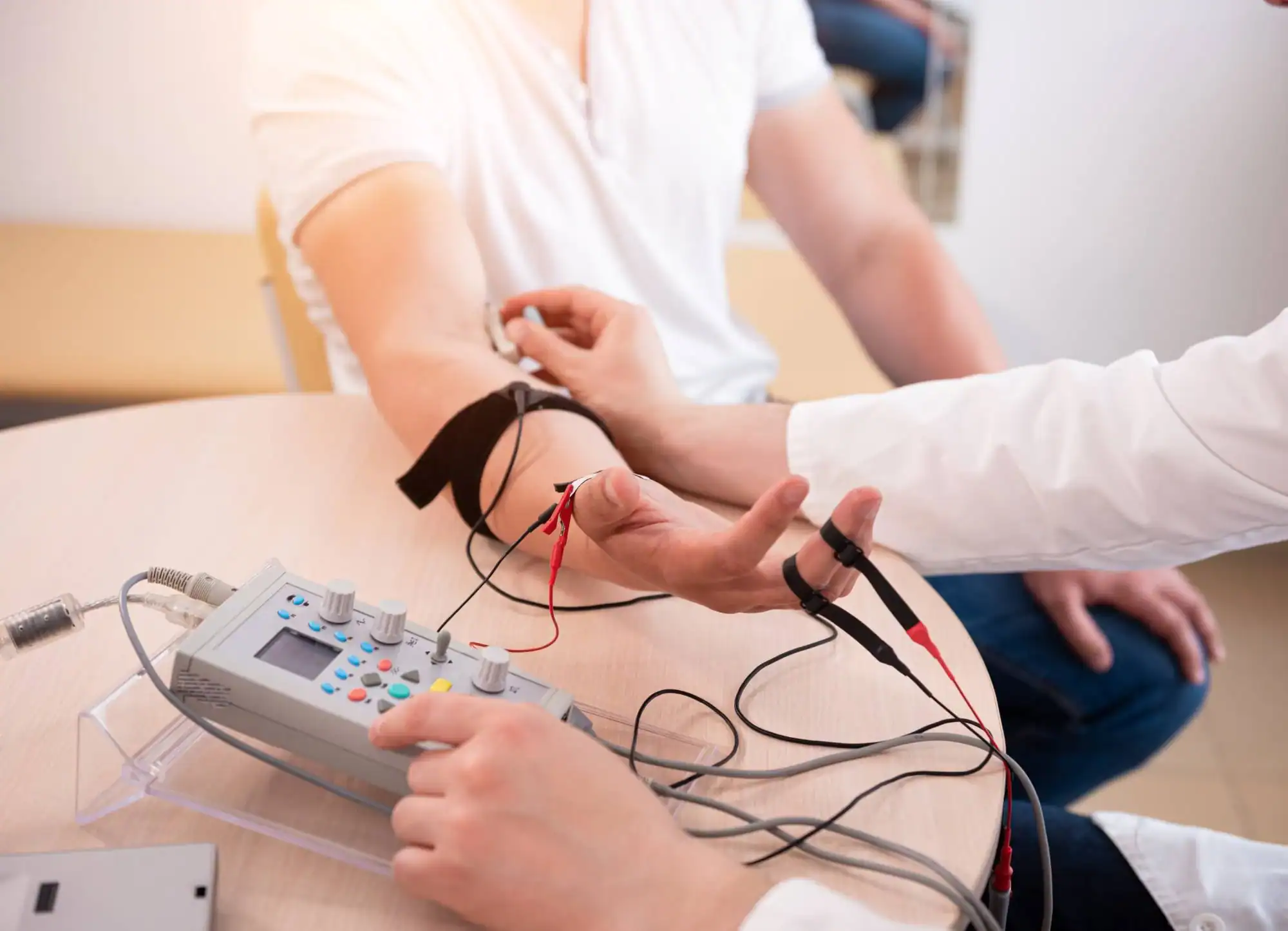
Ready to get started?
Your EMG testing includes both nerve conduction studies and electromyography in one appointment. The testing covers upper extremities for conditions like carpal tunnel syndrome, cubital tunnel syndrome, and cervical radiculopathy. Lower extremity testing diagnoses sciatica, peripheral neuropathy, and lumbar radiculopathy.
Most insurance plans cover EMG testing when medically necessary. Our staff handles prior authorization requirements and verifies your coverage before your appointment. You’ll know your expected costs upfront, with no surprise bills later.
Results interpretation comes from experienced neurologists who explain findings in plain language. You’ll understand not just what the test shows, but what it means for your daily life and what treatment options make sense for your specific situation.
